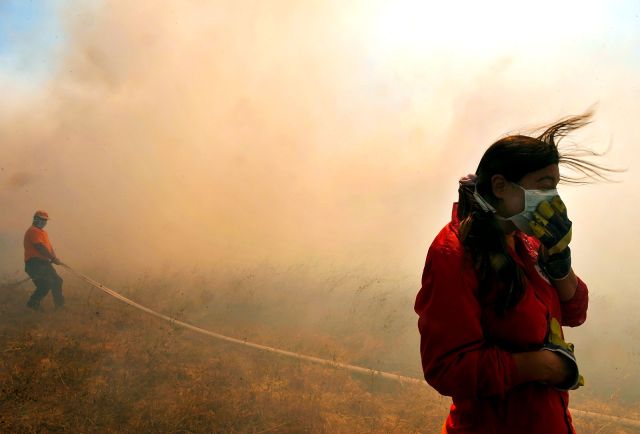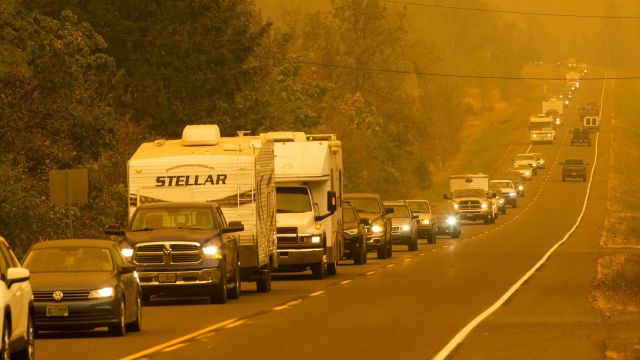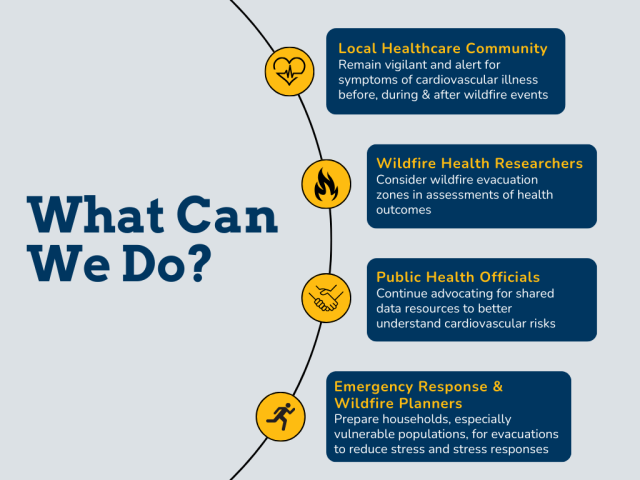
Cardiovascular Events And Wildfire Evacuation Orders
As wildfires continue to grow in frequency and intensity, more people are at risk of associated adverse health outcomes, such as increased rates of hospitalizations, emergency room / urgent care visits, and death. While much of the current research focuses on smoke or particulate matter, the team led by WRI examined an acutely stressful and spatiotemporal definition of wildfire exposure: evacuation orders. They investigated whether stress may link natural disaster exposure and poor cardiovascular outcomes.

Using Santa Barbara Cottage Hospital patient data from 2016-2019 to track individuals with existing cardiovascular disease and evacuation orders from the Alamo, Whittier, and Thomas fires, the team examined whether exposure to evacuation orders affected the risk of a secondary cardiovascular event.

The results suggest a socially significant risk to the public. The risks associated with evacuation order exposures will continue to grow with the increasing frequency and strength of wildfires and natural hazards. Cardiovascular issues affect nearly 49% of Americans aged 20 years or older and remain the leading cause of death in the United States.
Response Priorities
Further research is needed to increase the precision of cardiac response to evacuation orders. A critical constraint in conducting a study is gaining access to patient level records from multiple health care organizations in Californian communities impacted by wildfires.

Reference
Arabadjis, S. D., Sweeney, S. H., Kenner, C. E., & Tedesco, D. J. (2023). Wildfire, evacuation, and cardiovascular events: A spatial exposure approach. Applied Geography, 159, 103033.



